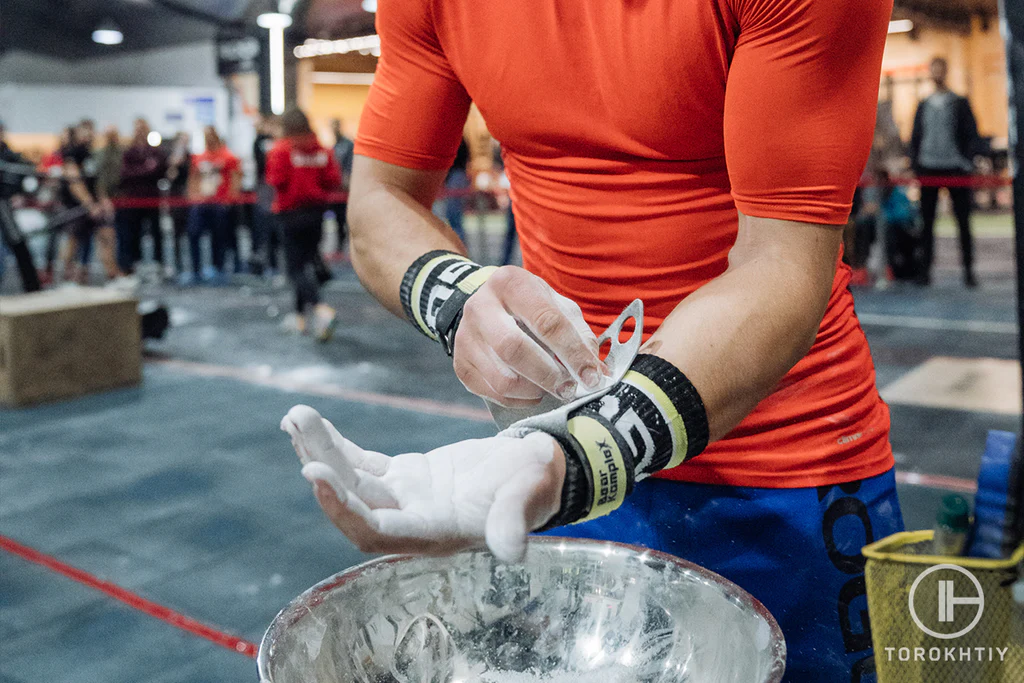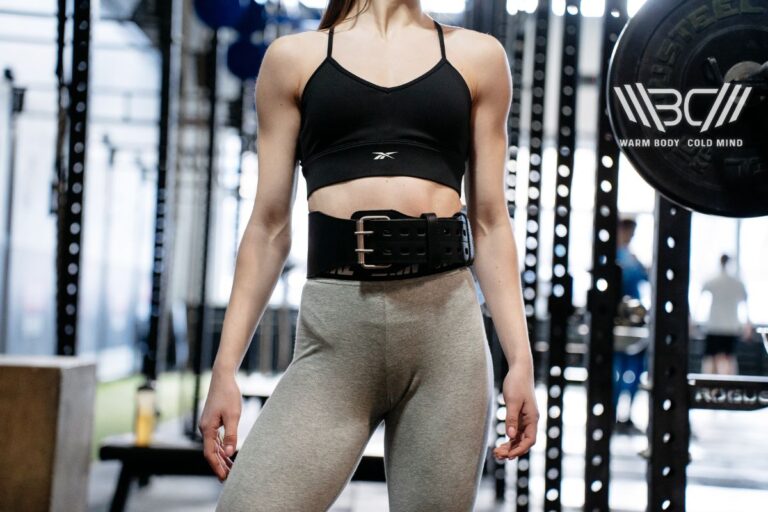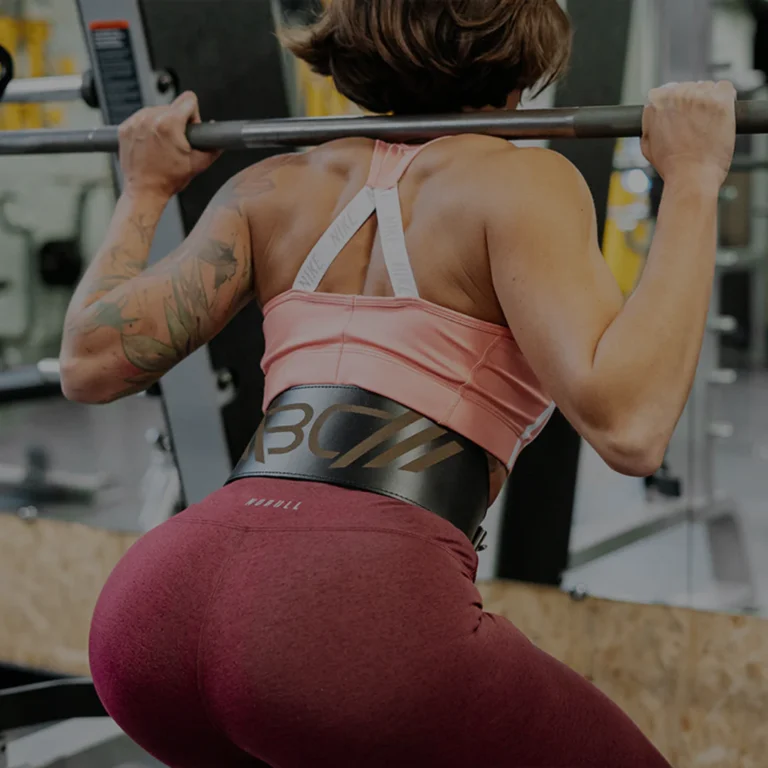What Is Gym Chalk Used For?
What is gym chalk used for, and do you really need it? Whether you’re a seasoned lifter or just starting out, you’ve likely seen gym-goers dusting their hands with a mysterious white powder before lifting.
Does chalk help with grip? Yes! Gym chalk is a simple but powerful tool that can help improve your grip, prevent injury, and boost performance.
But is chalk necessary? Is it beneficial? Will it give you an edge?
In this article, we’ll explore the benefits of gym chalk and whether it’s a must-have for your lifting routine.
Let’s grip!
What Is Gym Chalk Used For?
Gym chalk improves grip and reduces slippage during weightlifting, powerlifting, gymnastics, and other activities that require a secure hold on equipment or surfaces.

What Is Gym Chalk?
There are two main types of gym chalk: dry chalk(loose chalk/power and block chalk) and liquid chalk. Loose chalk is a fine powder that is commonly used in weightlifting and gymnastics. Gym chalk is manmade (not natural) out of magnesium carbonate(MgCO3). It is often stored in a chalk bag and applied to the hands or equipment as needed.
Block chalk, on the other hand, is a solid block of chalk that is often used in powerlifting and other strength sports. It is typically broken up into smaller pieces and applied to the hands or equipment before lifting.
Some other variations of gym chalk include liquid chalk, a mixture of chalk and alcohol that dries quickly and provides a longer-lasting grip, and colored chalk, which is used for decorative purposes and is often seen in rock climbing and gymnastics.
Why Should You Use Gym Chalk?
Using gym chalk isn’t just for show – it’s an important tool to help you lift heavier and stay safer during your workouts. If you’ve ever been at the gym and found yourself struggling to maintain your grip during a heavy lift, then you know the importance of gym chalk.
Gym chalk is the secret weapon for anyone looking to improve their grip and take their workout to the next level. By creating a dry, non-slip surface on your hands, gym chalk provides the grip and traction you need to perform challenging exercises with confidence and control.
Chalk absorbs sweat and moisture from your hands, giving you a better grip on weights and equipment. Plus, it can prevent pesky slips and injuries that can derail your progress.
Let’s check out some reasons on why you should use gym chalk during your next workout!
1. Better Grip
What does chalk do for lifting, you may ask? In short, it helps you lift heavier. With chalk on your hands, you’ll have a better grip on weights and equipment, allowing you to lift heavier and push yourself harder.

2. Reduced Risk of Injury
It reduces the risk of injury – nobody wants to slip and drop a weight on their foot (ouch!). Chalk absorbs moisture from your hands, reducing the risk of slips and injuries.
3. Comfort
It’s easier on your skin – lifting weights without chalk can lead to painful calluses and blisters. Does chalk prevent calluses? It cannot be guaranteed to prevent them, but it will surely help.
Chalk helps reduce friction on your hands, making your workout more comfortable and less damaging to your skin.
4. Sanitary Benefits
Chalk can act as a barrier between the skin and equipment, reducing the amount of oil and bacteria transferred during use. This can help prevent the buildup of bacteria and unpleasant odors, making the gym a more hygienic and comfortable environment for everyone. However, it’s important to use chalk responsibly and avoid excessive application that could lead to a mess or create a breathing hazard.

Maximize your grip with premium quick-drying Warm Body Cold Mind liquid chalk leaving no mess.
5. Workout Consistency
Using gym chalk can help you stay consistent when working out by providing a reliable grip that allows you to perform exercises with greater confidence and control. This can help you lift heavier weights, complete more repetitions, and push yourself further in each workout.
By reducing the risk of slips and drops, gym chalk can help you maintain a consistent training routine and achieve your fitness goals with greater ease and efficiency.
6. Price
It’s inexpensive – compared to other workout supplements and accessories, chalk is a relatively inexpensive investment in your fitness routine.
7. The Cool Factor
It makes you look cool – let’s face it, dusting your hands with chalk makes you look like a total badass in the gym. And who doesn’t want to feel like a superhero while they’re lifting weights?

When Can You Skip Using Gym Chalk?
While gym chalk is a useful tool for many lifters, there are some situations where it may not be necessary. For example, if you’re doing a workout that doesn’t require a strong grip, like a cardio session or a yoga class, then you obviously do not need powerlifting chalk.
Another factor to consider is the type of equipment you’re using. If you’re lifting on equipment that’s well-maintained and has good grip, you may not need to use gym chalk.
Additionally, if you have naturally dry hands or if your gym has a humid environment, you may not need to use gym chalk as often as someone with sweaty hands or in a dry environment. And of course, if your gym doesn’t allow the use of chalk, then you’ll have to find other ways to improve your grip.
However, for most lifters, gym chalk is a valuable tool that can help them lift heavier, safer, and more comfortably.
Subscribe!
The latest reviews of must-have home gym training equipment, apparel, and supplements that will enhance your performance and bring you new results.
How to Use Gym Chalk Correctly?
Begin by finding a good quality gym chalk that suits your needs. If you’re new to chalk, then I suggest that you give a few brands a go. While they might look the same at first glance, chalk can vary in quality very much depending on which one you are using.
After you get chalk, ensure your hands are clean and dry before application. This will ensure that the chalk adheres to your hands and improves your grip.
Take a small amount of chalk and rub it between your hands. Make sure to distribute it evenly on your palms and fingers.
Tap your hands together to remove any excess chalk. You want enough chalk to improve your grip, but not so much that it creates a mess or makes it difficult to grip equipment.
Start your workout and reapply chalk as needed. If you start to feel your grip slipping, take a moment to reapply chalk and continue your workout.
After your workout, be sure to clean up any excess chalk on the equipment or floor. This will help keep the gym clean and safe for other gym-goers.
Once you’ve mastered the basics, I’ll leave a few more tips that could help you out along the way:
1. Keep Your Chalk in a Chalk Bag
This will help prevent spills and make it easier to apply chalk during your workout.

2. Wash Your Hands After Your Workout
Gym chalk can leave residue on your hands, so be sure to wash them thoroughly after your workout to avoid transferring chalk onto other surfaces.
3. Don’t Inhale
When applying gym chalk to your hands, be sure to do it away from your face. This will help prevent you from inhaling any of the chalk dust. Consider using liquid chalk if you’re particularly sensitive or have respiratory issues.
Warm Body Cold Mind Liquid Chalk: Liquid Chalk Review
Are you looking for liquid hand chalk for weightlifting that smells like fresh, juicy citrus and works like a charm? Let me introduce you to – WBCM Liquid Chalk!
Our chalk is thick and creamy, meaning a small amount will cover your entire hand and last for your whole workout. This also means – better product mileage. Because of its nice coverage and longevity, you won’t need to reapply chalk in the middle of a rep series.
Not only is this liquid chalk effective, but it’s also reasonably priced. Plus, the smaller 50 ml packaging is perfect for taking with you. Not only to the gym and home. But also to carry around the gym with you. You won’t see someone walking around with a chalk block or carrying those giant chalk trays around the gym. And don’t worry about losing the cap – it comes with an extra, just in case.

Liquid chalk, unlike dry chalk, needs time to dry. This one dries in 15 seconds or less, leaving your hands feeling dry and ready to grip in no time. Just ensure you’re washing the chalk off thoroughly after your workout and applying a moisturizer to your hands, as the alcohol the chalk contains can dry your hands out, especially if your skin is sensitive.
You might not notice any skin irritation or damage after a few uses. But over time and prolonged use, your skin will dry out. But also keep in mind that because of the alcohol, liquid chalk can also serve as an antiseptic in order to combat viral and bacterial transfer via touch. And that in itself is never a bad thing.
Pros
- Has a pleasant zesty smell
- Easily portable around the gym or home, unlike dry chalk
- There’s no dust generated
- Long-lasting
- More sanitary
- Not very messy
Cons
- You have to wait for a few moments until the chalk dries
- The alcohol in the chalk may dry your hands out
- The initial purchasing cost might be higher than similar-quality and similar-quantity dry chalk
Warm Body Cold Mind Block Chalk: Dry Block Chalk Review
Warm Body Cold Mind Block Chalk will help athletes and fitness fanatics grip during intense workouts. This quality block chalk has excellent friction and moisture absorption to retain all training gear. The chalk’s texture is perfect for grip and smoothness. It shielded my hands quickly, preventing slips and mishaps while doing heavy lifting exercises.
It’s made out of pure Magnesium Carbonate (MgCO3). This one doesn’t go crazy with color options and sticks to traditional and natural white. One block can withstand everyday use. It’s great because I don’t have to reapply as frequently as with other products.

The size of the block is 56 grams or 2 ounces. If you’re in Europe and want it in kilos, then that’s approx 0.05kg. The dimensions of the package are 3.98 x 3.62 x 1.85 inches. If you go for the 8-block packaging option. Then the whole item weighs about 0.6kg (21.2 ounces). And the more extensive package is 7.4 x 7.36 x 3.86 inches.
Better box sealing would prevent chalk from breaking during shipping.
If you’re a weightlifter, climber, or athlete, you’ll love WBCM Block Chalk for its performance, durability, and lower dust production. It will change your workouts – in a good way!
Pros
- Not as dusty as other dry chalk
- 100% magnesium, no added fillers
- Very long-lasting; will last you during full workouts
- Very affordable in price compared to similar different brand items
Cons
- The package could be a bit better sealed as you can receive the package covered in a bit of dust.
FAQ
What Is the Difference Between Chalk and Gym Chalk?
Chalk is a soft rock composed of calcium carbonate, while gym chalk is a specialized formulation of chalk that contains magnesium carbonate and is designed specifically for fitness environments.
What is gym chalk? Chalk is for teachers; gym chalk is for athletes and lifters. Think of chalk as the shy, nerdy cousin and gym chalk as the cool, buff one that always gets attention.
Why Do Gyms Not Allow Chalks?
Some gyms do not allow gym chalk because it can make a mess and be difficult to clean up. This is why liquid chalk may still be used in such gyms, because of the decreased amount of mess it produces.
Can Gym Chalk Be Used for Climbing?
Yes, hand chalk for gym is pretty much the same as climbing chalk. The formula may be different depending on the brand, but both types of chalk are made from magnesium carbonate (MgCO3). Gym chalk can be used for climbing as it helps to absorb moisture and improve grip. It is commonly used by rock climbers to increase friction between their hands and the climbing surface, allowing them to grip and hold on better.
Conclusion
Chalk will help you lift safer and easier as it will increase friction and improve grip. Liquid chalk will do the same in a bit more effective way, while keeping your health safe as well as making less of a mess along the way.
If you sweat heavily during a workout, chalk will keep your hands dry and prevent slipping. Try it out and let us know what you think and, if you’re an experienced user, share your advice with us in the comment section!
References:
- “Magnesium carbonate,” // Wikipedia: https://en.wikipedia.org/wiki/Magnesium_carbonate
- “Calcium carbonate,” // Wikipedia: https://en.wikipedia.org/wiki/Calcium_carbonate
- L. Owen, K. Laird, M. Shivkumar, “The Effect of Climbing Chalk Powder on the Infectivity of Human Coronavirus OC43,” Letters in Applied Microbiology 72, no. 6 (2021): 725-729, https://pubmed.ncbi.nlm.nih.gov /33619736/ (accessed May. 20, 2023).
- Nicholas T. Bacon, Greg A. Ryan, Jonathan E. Wingo, Mark T. Richardson, Tracey Pangallo, and Phillip A. Bishop, “Effect of Magnesium Carbonate Use on Repeated Open-Handed and Pinch Grip Weight-Assisted Pull-Ups,” International Journal of Exercise Science 11, no. 4 (2018): 479-492, https://www.ncbi.nlm.nih.gov/pmc /articles/PMC5841679/ (accessed May. 20, 2023).
- Arif Mithat Amca , Laurent Vigouroux , Serdar Aritan & Eric Berton: “The effect of chalk on the finger–hold friction coefficient in rock climbing,” Sports Biomechanics, (2012) 11:4, 473-479. http://dx.doi.org/10.1080/14763141.2012.724700 (accessed May. 20, 2023).
- Bill Wallstreet, “What is Climbing Chalk Made Of,” https://caverntours.com/what-is-climbing-chalk-made-of/ (accessed May. 20, 2023).
- Cat Wang, “Could climbing chalk protect you from more than rips?,” 16 Jun 2022, McGill University, Office for Science and Society Separating Sense from Nonsense, https://www.mcgill.ca/oss/article/covid-19-general-science/could-climbing-chalk-protect-you-more-rips (accessed May. 20, 2023).
- Besim Halilaj, “Does the usage of gymnastics chalk have a positive impact on hand grip strength?,” Gazzetta Medica Italiana Archivio per le Scienze Mediche (2018) 9(7-8):177, https://www.researchgate.net/publication/327500102_Does_the_usage_of_gymnastics_chalk_have_a_positive_impact_on_hand_grip_strength (accessed May. 20, 2023).
- Kilgas, Matt A., “THE EFFECT OF MAGNESIUM CARBONATE (CHALK) ON GEOMETRIC ENTROPY, FORCE AND EMG DURING ROCK CLIMBING,” (2015). https://commons.nmu.edu/cgi/viewcontent.cgi?article=1056&context=theses (accessed May. 20, 2023).
- “Chemistry of chalk and MgCO3, explored through the sport of weightlifting,” Royal Society of Chemistry, https://edu.rsc.org/download?ac=12479 (accessed May. 20, 2023).
- Jace McArthur, Paul Maggio, Mark DeBeliso, “The Effect of Grip Chalk on the Clean Grip Midthigh Pull,” International Journal of Sports Science, Vol. 10 No. 2, 2020, pp. 50-55. doi: 10.5923/j.sports.20201002.04. (accessed May. 20, 2023).
Author: Ihor Shymechko
Coach, PRO Olympic Weightlifter
Ihor Shymechko is a renowned Ukrainian weightlifter. He has represented his country in several Olympic Games, notably in 2008, 2012, and 2016. His impressive career includes winning the European championship in 2009 and earning a silver medal in 2011 in the +105 kg division. Shymechko also earned a Ph.D. from Lviv State University of Physical Culture.












It is difficult to overestimate the purpose of chalk for the gym. I use it for pull-ups and dumbbell lifting, which prevents me from slipping if my hands are sweaty. Personally, I use liquid chalk, which is convenient and hygienic.